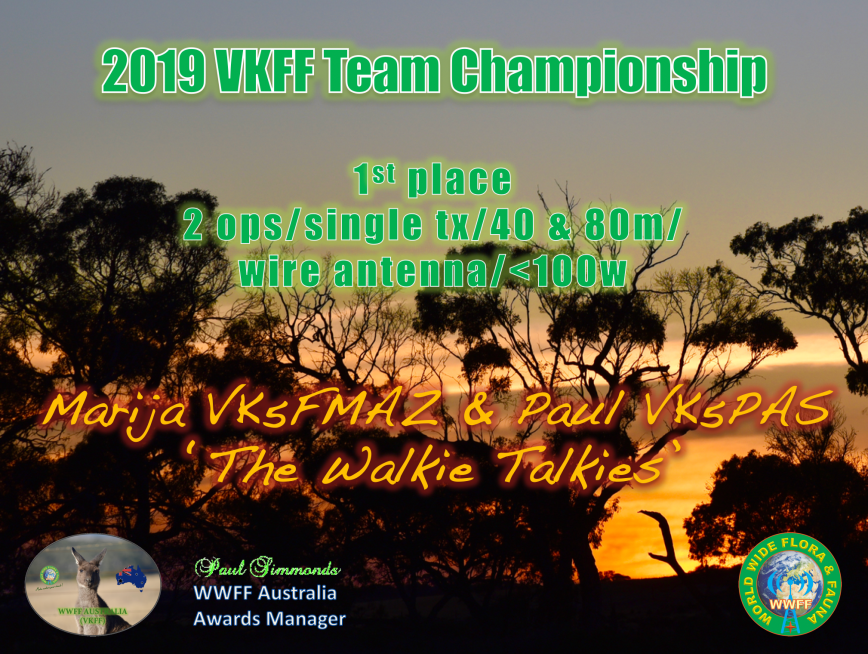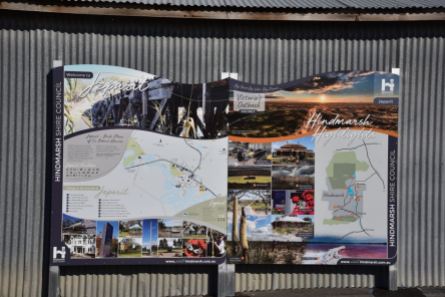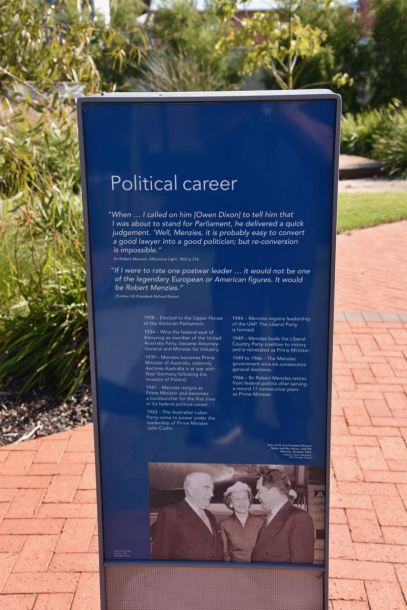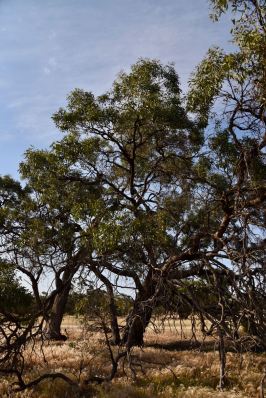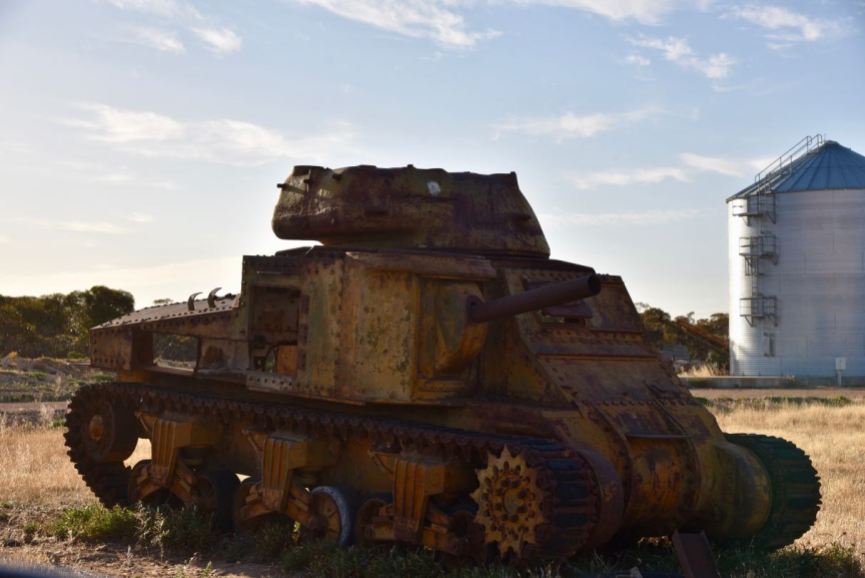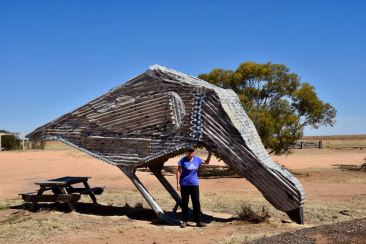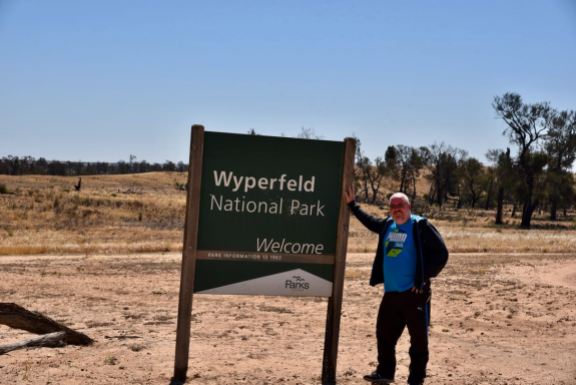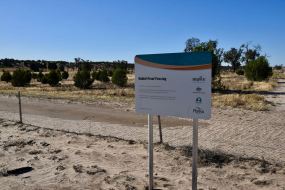Our fourth planned park for Sunday (11th November 2019) was the Hindmarsh Flora & Fauna Reserve VKFF-2331. This would be the first time that the park had been activated for the World Wide Flora & Fauna (WWFF) program.
The park is located about 400 km north-west of the city of Melbourne and about 14 km south of the town of Rainbow.
After leaving the Wathe Flora & Fauna Reserve we headed into the little town of Lascelles. The town was named after Edward Lascelles (1847-1917) who was a passionate supporter of the district. Lascelles promoted closer settlement, was involved in water management in the area, built a large home and was a promoter of the idea that the Wimmera Mallee would be excellent grain-growing country.
Little remains in the town now. The centrepiece is the impressive hotel which was built in 1905. The pub looked very inviting, but we were a bit pressed for time. Both Marija and I agreed that we would need to come back here sometime to check it out.
The main attraction in Lascelles is the silos which are part of the Victorian Silo Art Trail. The two images of local farming couple Geoff and Merrilyn Horman were painted by Melbourne artist Rone. The work on the 1939 built silos was completed in 2017.
We then turned off the Sunraysia Highway onto the Henty Highway which is named in honour of the Henty brothers who were the first permanent land-based settlers in Victoria, taking up land at Portland in 1834.
We soon reached the town of Hopetoun where we planned to stop for lunch. Hopetoun was named after the 7th Earl of Hopetoun, the Governor of Victoria from 1899 to 1895, and later the first Governor-General of Australia. It is a beautiful little town located on the shores of Lake Lascelles.
We bought some lunch from one of the local cafes and headed down to Lake Lascelles and enjoyed some of the beautiful afternoon sun.
After lunch, we had a quick look at Corrong Homestead in Hopetoun. Unfortunately, the homestead was closed but we did have a quick look around the grounds. In 1846 Peter McGinnis guided by a friendly aboriginal followed what is now known as the Yarriambiack Creek from Horsham to Lake Corrong looking for unoccupied land for sheep grazing. He was the first European pastoralist to settle in the Mallee. He was joined by his wife, family and partner George Bell and established the Lake Corrong Run.
This slideshow requires JavaScript.
We continued south on the Henty Highway to the little town of Roseberry. The town was named after Archibald Philip Primrose, 5th Earl of Rosebery who toured Australia from September 1883 to January 1884, and became the British Prime Minister from 1894-1895.
There is another impressive piece of silo art in this town. The Roseberry mural was painted by Melbourne artist Kaff-eine. The two images are of a young female farmer in a work shirt, jeans and cowboy boots. The other is of a horseman in an Akubra hat, bogs boots and an oilskin vest, with his horse.
We continued south and out next stop was the town of Beaulah. Isaiah 62:4 in the Bible was the inspiration the McKenzie family, devout local Presbyterians, took when they named this tiny town Beulah in 1891.
“Thou shalt no more be termed Forsaken; neither shall thy land any more be termed Desolate: but thou shalt be called Hephzibah, and thy land Beulah: for the Lord delighteth in thee, and thy land shall be married.”

Little Yarriambiack Creek at Bealuh
We continued further south on the Henty Highway until we reach Galaquil. There is a cairn here which commemorates the construction of the dog netting fence which crossed the highway at this point. The fence was erected in 1885 from Tyntynder to the South Australian border to prevent dingoes and rabbits overrunning and devastating pastoral and agricultural land to the south.
Our next stop was the town of Brim to have a look at their silo art mural. It is believed that Brim is a local Aboriginal word meaning “a spring” or “a well”. The images of four farmers were painted on the disused Brim silos in 2015 by Guido van Helten.
An interesting stop in the town of Brim is the solitary grave of James Simson, formerly a Commander in the Honourable East India Company Service. He died in 1858 as a result of being gored by a bullock. His grave, which can now be located in Simson Street, is the only defined grave left of the Brim Station Cemetery.

We then drove back north along the Henty Highway and turned left onto the Birchip-Rainbow Road. Our next stop was the town of Rainbow which was named after a property in the area called ‘Rainbow Rise’ which, in turn, had been named because it was located near a crescent-shaped ridge which in spring was ablaze with multicoloured wildflowers.
This looked like a great little town to explore and it was our first time there. Sadly we were running short of time. This was placed on our ‘must return to’ list.
This slideshow requires JavaScript.
We headed south out of Rainbow on the Dimboola-Rainbow Road and soon reached the Hindmarsh Flora and Fauna Reserve. The reserve is about 472 acres in size and is located just to the east of Lake Hindmarsh.
This was not an overly easy park to access. The only access point we could find was off the Dimboola-Rainbow Road. There is a small section of scrub which abuts the road. But, this is not part of the park. We had to drag the gear through this little bit of scrub and into the park. It was a hot day and we weren’t keen on tramping through the long grass.
Marija and I decided that this was going to be a very quick 40m activation and then hit the road. I called CQ on 7.150 and logged Rob VK2VH, followed by Ray VK4NH, and then Lee VK2LEE. It took me just 5 minutes to get the required 10 contacts to qualify the park for VKFF. Contact number ten was with Peter VK3PF/p who was activating the Baranduda Regional Park VKFF-0959.
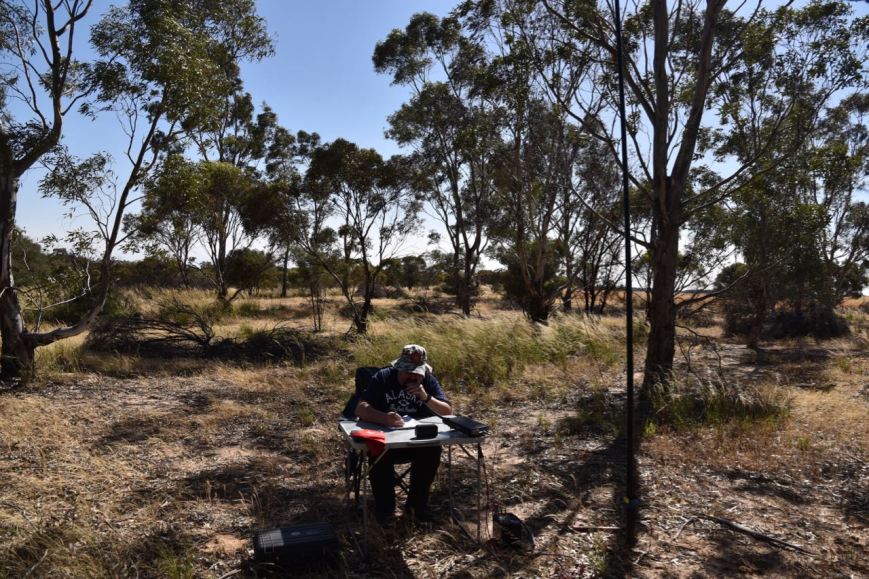
I then swapped the mic with Marija, who also logged the Park to Park contact with Peter VK3PF/p. Marija’s next contact was with Lee VK2LEE, followed by Linda VK7QP, and then Rob VK2VH. It took just 7 minutes for Marija to have her 10th contact in the log, a contact with Ray ZL4TY/VK4.
We were really pushed for time and hoped to squeeze in one more park activation, so we packed up and headed off to the next park. We apologise to anyone who did not get this park in the log. We will return at some time in the near future.
Marija worked the following stations on 40m SSB:-
- VK3PF/m (Baranduda Regional Park VKFF-0959)
- VK2LEE
- VK7QP
- VK2VH
- VK4AAC/2
- VK2LX
- VK4HNS
- VK4NH
- VK4DXA
- ZL4TY/VK4
I worked the following stations on 40m SSB:-
- VK2VH
- VK4AAC/2
- VK4NH
- VK4DXA
- ZL4TY/VK4
- VK2LEE
- VK7QP
- VK2LX
- VK4MWB
- VK2YK
- VK3PF/p (Baranduda Regional Park VKFF-0959)
- VK3SQ
- VK4HNS
- VK2IO
- ZL1TM
References.
Aussie Towns, 2019, <http://www.aussietowns.com.au/town/lascelles-vic>, viewed 14th November 2019
Aussie Towns, 2019, <https://www.aussietowns.com.au/town/rosebery-vic>, viewed 14th November 2019
Aussie Towns, 2019, <https://www.aussietowns.com.au/town/beulah-vic>, viewed 14th November 2019
Aussie Towns, 2019, <https://www.aussietowns.com.au/town/brim-vic>, viewed 14th November 2019
Aussie Towns, 2019, <http://www.aussietowns.com.au/town/rainbow-vic>, viewed 14th November 2019
Protected Planet, 2019, <https://www.protectedplanet.net/search?q=hindmarsh>, viewed 14th November 2019
Wikipedia, 2019, <https://en.wikipedia.org/wiki/Hopetoun,_Victoria>, viewed 14th November 2019
Yarriambiack Shire Council, 2019, <https://yarriambiack.vic.gov.au/tourism/hopetoun/>, viewed 14th November 2019
Yarriambiack Shire Council, 2019, <https://yarriambiack.vic.gov.au/tourism/brim/>, viewed 14th November 2019








